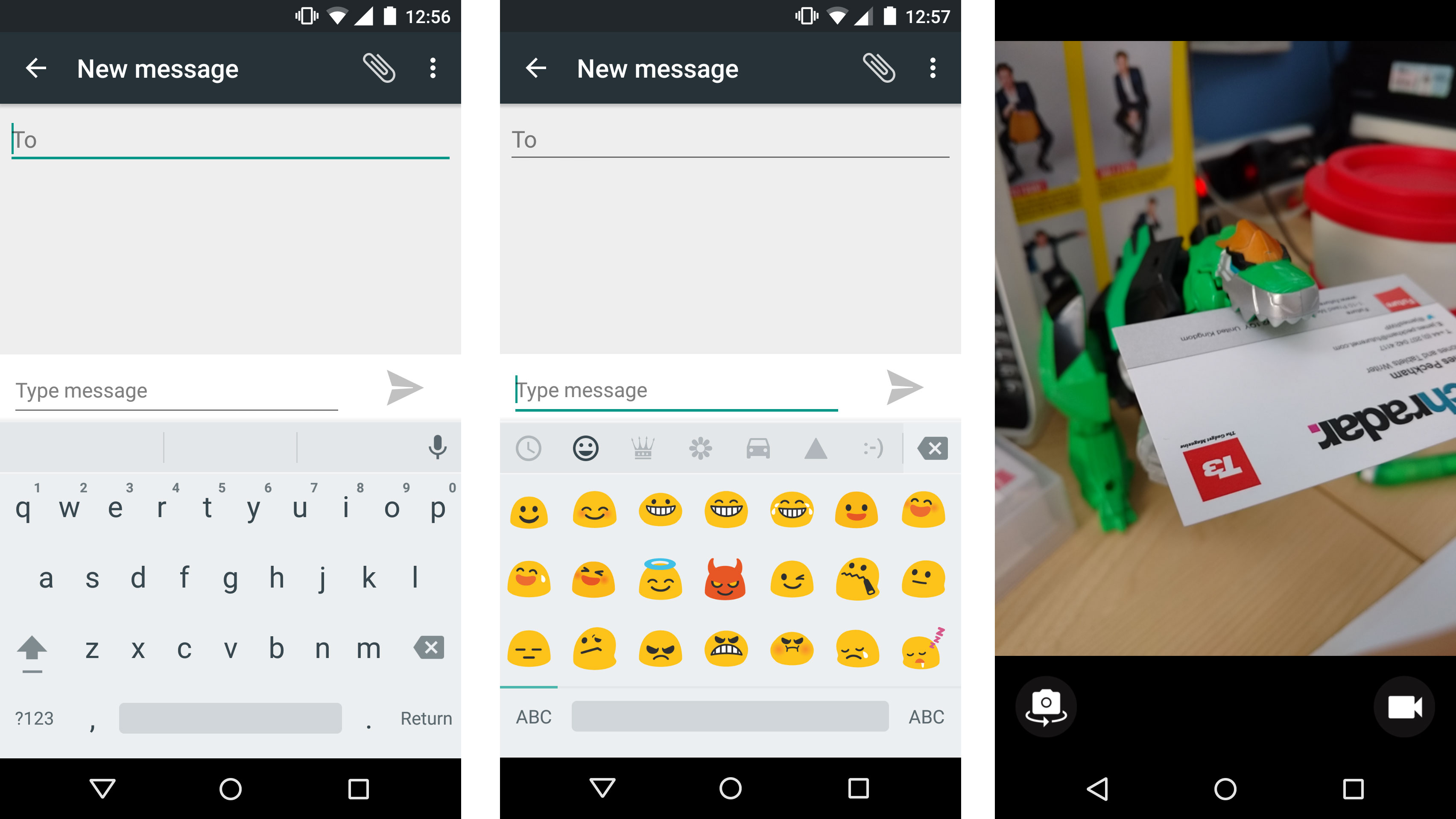Why you can trust TechRadar
The last bastion of the stock Android format, Motorola has managed to keep the OS clear from spam in a way that other manufacturers, such as Samsung and HTC, haven't.
At launch, the Moto X Play came with Android Lollipop, but has since seen an upgrade to Android Marshmallow, meaning you've got many of the latest features in place and ready to go.
Soon, Motorola will update the Moto X Play to Android Nougat – the latest update to Google's mobile operating system. As mentioned previously, users will benefit from the enhanced Doze mode, which will save battery life during the day and night. Also, you'll be able to display two apps simultaneously – upping your productivity, or amping your downtime.

Stock is in my opinion the way forward – I much prefer it to any overlay or design from other Android phone manufacturers.

What you do have, though, is Motorola's range of apps. These include Connect to track all your devices, Migrate to help switch your devices, and Moto to enable hands-free control when driving.

I never find any real use for these apps, and I generally don't even open them on a Motorola phone. I'd rather they weren't preinstalled, so you could just add them if you want them; fortunately you can uninstall them if you want to free up some space.
Performance
Motorola has made the controversial choice to include a smaller processor in the X Play than in the Moto X Style or Moto X Force. The Moto X Play has a Qualcomm Snapdragon 615 octa-core processor, which includes a quad-core 1.7GHz Cortex-A53 and a quad-core 1.0 GHz Cortex A53 alongside an Adreno 405 GPU.
Sign up for breaking news, reviews, opinion, top tech deals, and more.
It's not the weakest setup we've seen on a smartphone in recent years, but it's nowhere near as strong as that in the Moto X Style or Moto X Force – and the difference is noticeable.
There was a bit of a lag when I was scrolling through pages with multiple apps open. I found that the camera app in particular took quite a while to launch, but that could also be an issue with the sensor.
There's also 2GB of RAM on this phone, which should be fine but feels like a bit of a letdown when you consider that the Force and Style each come with 3GB.
Gaming-wise the phone performed quite well, and even after 10 minutes of running Real Racing 3 it hadn't crashed or heated up, as some phones in this price bracket tend to.
I ran the Geekbench 3 benchmarking software on the phone a few times, and recorded an average single-core score of 715 and a multi-core score of 2716.
We didn't run the test on last year's Moto X, so it's difficult to tell how it compares, but another phone in the same price bracket is the OnePlus 2, which returned a multi-core score of 4795. That's 2000 more than the Moto X Play, although that's little surprise as the OnePlus 2 has an impressive processor inside.
The Moto X Play is quite close to the iPhone 6, which scored 2905 – but then Apple phones are quite different offerings.
Overall it's a little disappointing to see what the Moto X Play is able to do with its processor, but it will be able to cope with most everyday tasks, and it seems to handle high-end gaming sufficiently as well.
Current page: Interface and performance
Prev Page Display and key features Next Page Battery and essentials
James is the Editor-in-Chief at Android Police. Previously, he was Senior Phones Editor for TechRadar, and he has covered smartphones and the mobile space for the best part of a decade bringing you news on all the big announcements from top manufacturers making mobile phones and other portable gadgets. James is often testing out and reviewing the latest and greatest mobile phones, smartwatches, tablets, virtual reality headsets, fitness trackers and more. He once fell over.
